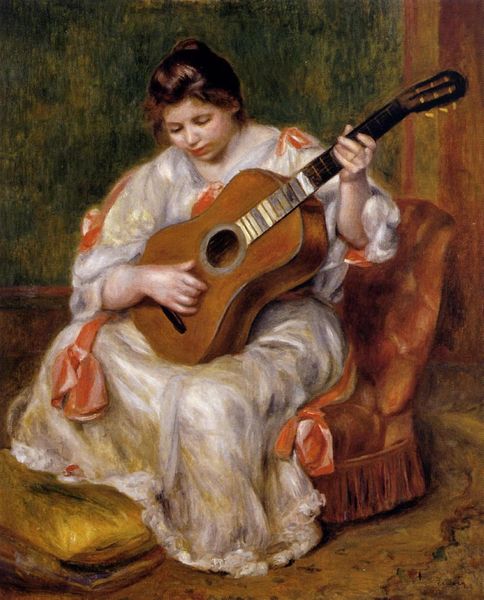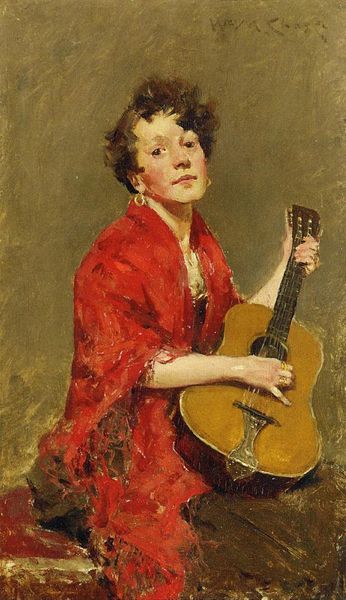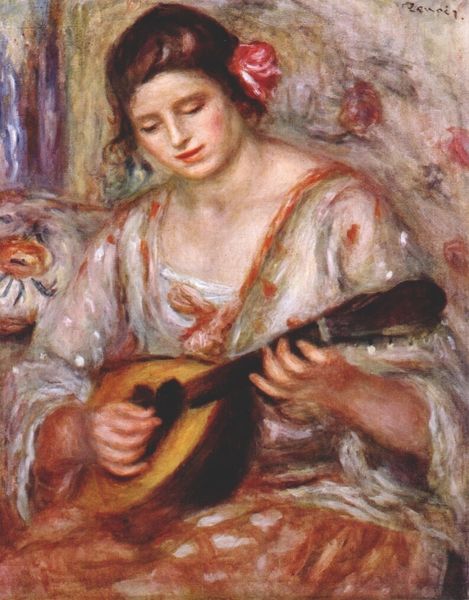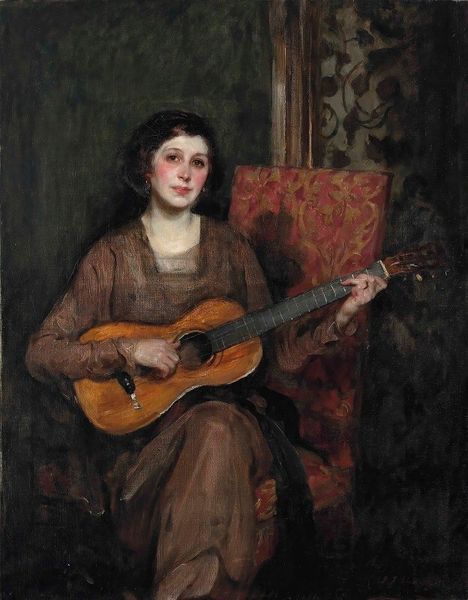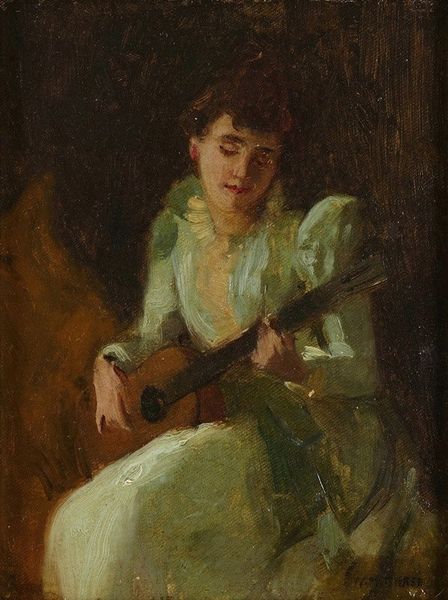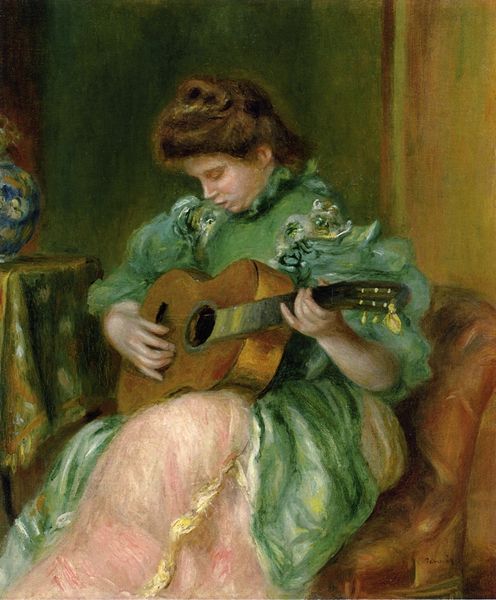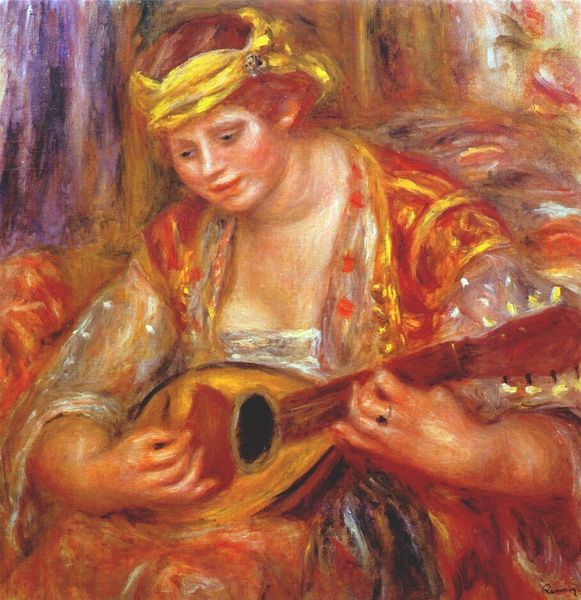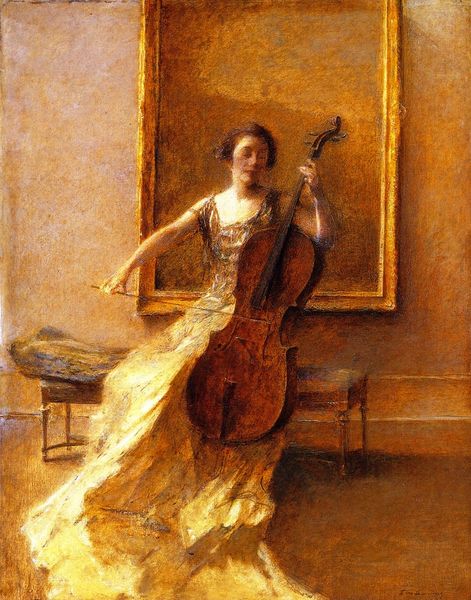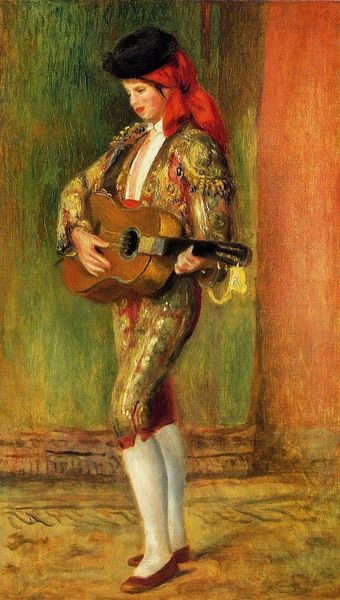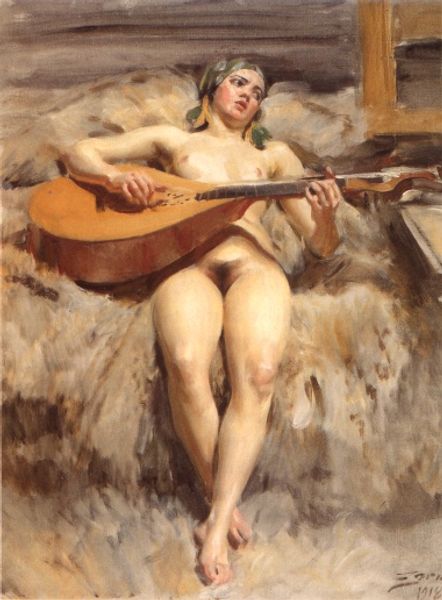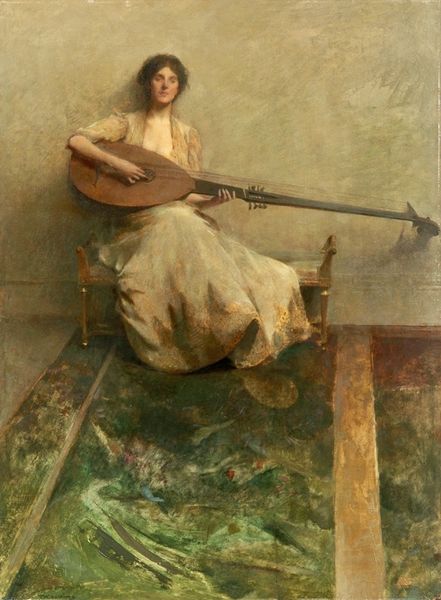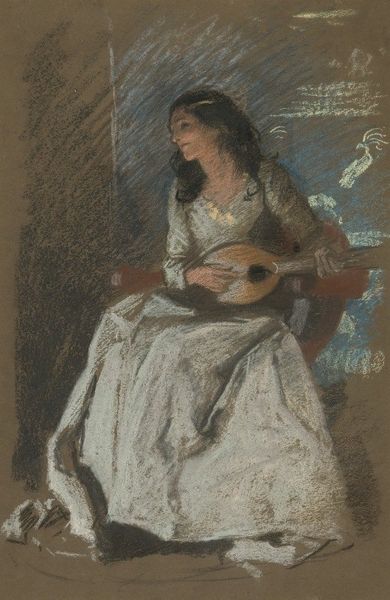
#
portrait
#
fantasy art
#
possibly oil pastel
#
oil painting
#
neo expressionist
#
portrait head and shoulder
#
underpainting
#
painting painterly
#
abstract character
#
surrealist
#
lady
#
female-portraits
#
digital portrait
Dimensions: 61.6 x 41.28 cm
Copyright: Public domain
Curator: Let's turn our attention to "The Mandolin Player," a striking portrait created in 1879 by William Merritt Chase. Editor: The palette is rich and muted, but there's a captivating softness in the figure. It almost feels as though the woman could begin to sing at any moment. Curator: Indeed, Chase masterfully captures a fleeting moment, and you can really get a sense of the handiwork and artistic processes here. This oil painting shows confident, almost dashing brushstrokes. The impasto is subtle but effective, drawing the eye to the face and hands. Editor: The woman's gaze is so direct, so confident. Considering the instrument and her opulent ruffled collar, I wonder what societal values she embodies or defies? Mandolins in this period can symbolize romance and leisurely pastimes for the upper classes, but is there also something rebellious in her eyes? Curator: I’d argue that her garments offer insight. Look at the sumptuousness of the collar. Chase uses layers and layers of pigment and precise craftsmanship to achieve that lace texture. This would certainly signify wealth and status. Editor: Perhaps. But what about the floral background? Those recurring blossoms also remind me of the transience of beauty. Her poised hand on the mandolin makes her an emblem of the music she is creating. The question becomes what message this figure is sending by creating a certain sound through material instruments in the picture. Curator: You raise some fascinating points! It seems that Chase creates a space for ambiguity, perhaps reflective of the changing social dynamics of the era, brought about by industrial advances. One sees that contrast echoed in the materials. Editor: It’s precisely these material tensions and echoes of cultural concepts that draw me to this artwork. Curator: Agreed, I am more confident in its demonstration of class through labour and commodities than symbolic significance. Thank you. Editor: Yes, and in turn, thank you; seeing through the symbolic layers helps connect us to those cultural values still present.
Comments
No comments
Be the first to comment and join the conversation on the ultimate creative platform.
